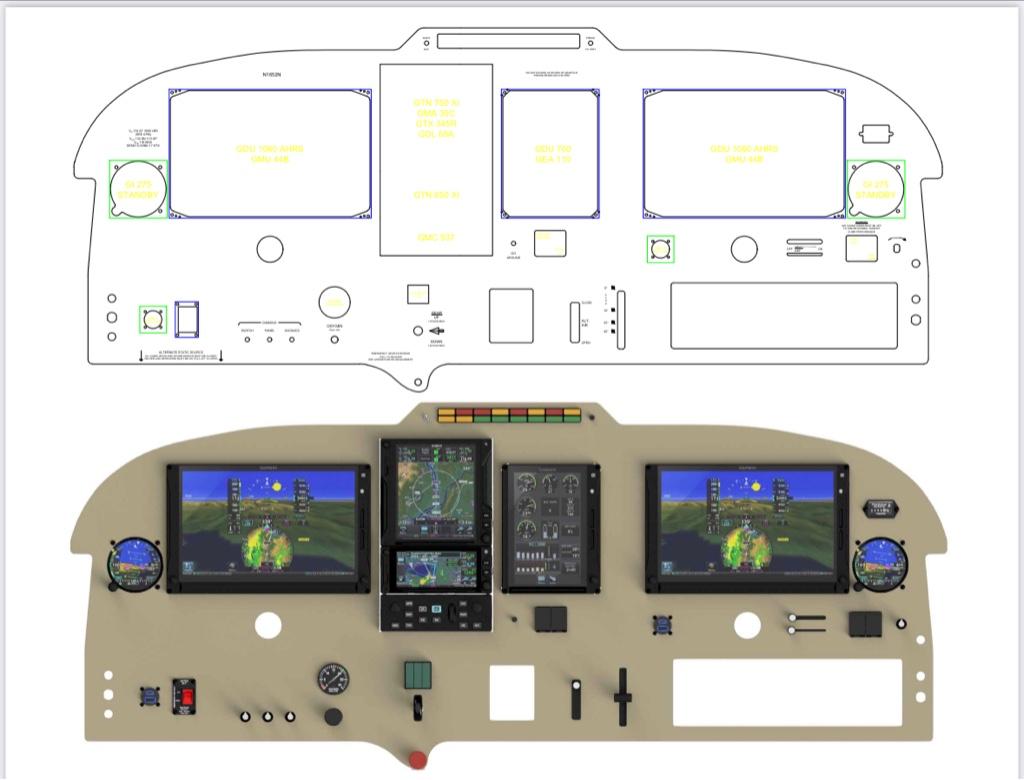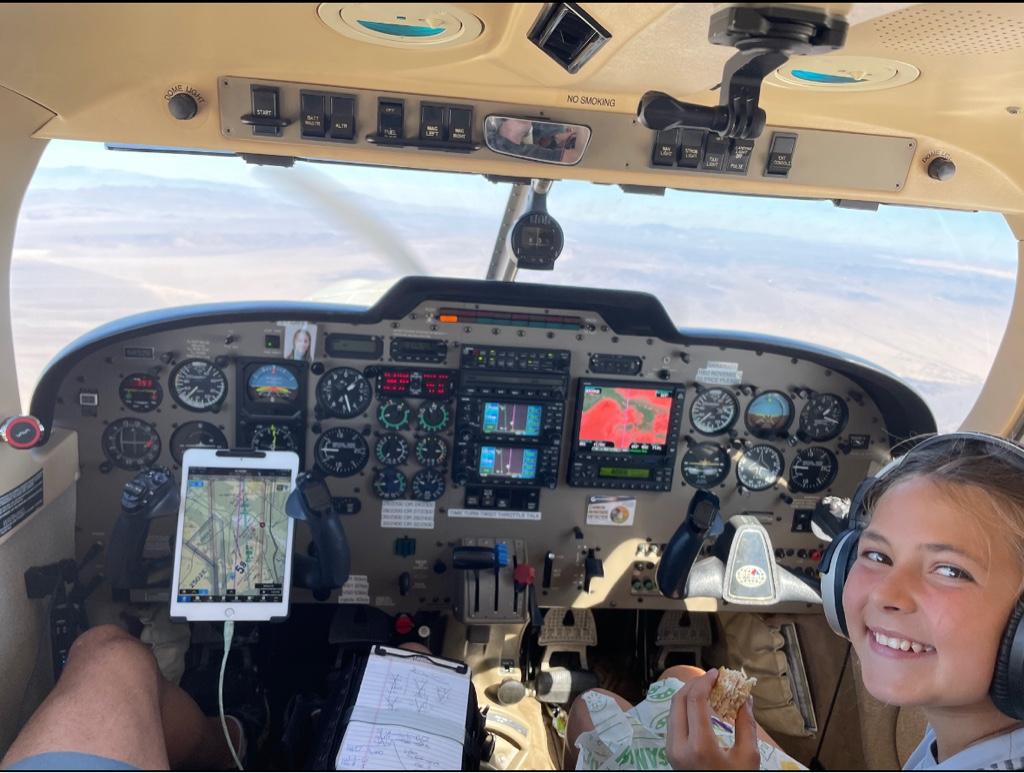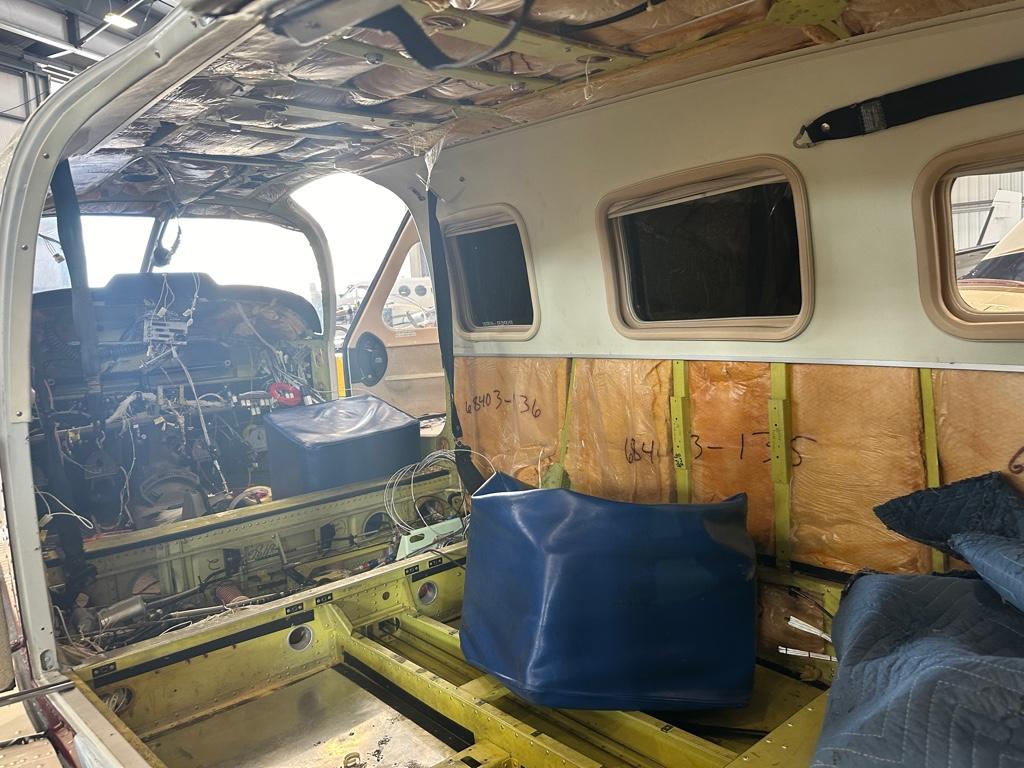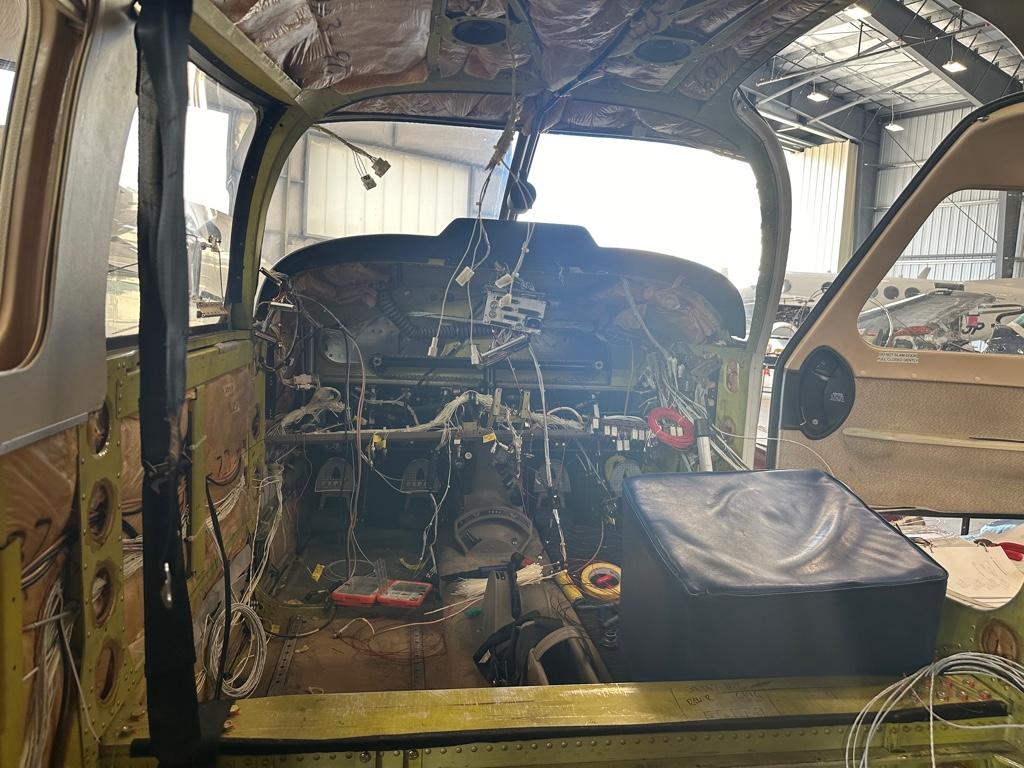The changes I would make from the OP drawing are:
1. Consider a G3X Touch system instead of a G500 TXi. If at all possible, get time behind both systems with a pilot proficient in their use. There are advantages of each and you might find that the G3X Touch fits your needs better. Some examples: The G3X Touch has a checklist page that is far superior to the GTN 750 checklist page, touching the G3X Touch EIS strip brings up the engine detail page, it has better on-screen controls for comm and nav radios and for its remote audio panel, and it can run a remote comm radio (not a big help if you do keep the dual GTNs but given the tendency for nav/comm/GPS #2 to be only used as comm #2 I like to just have the comm #2 without taking up space in the panel). You can have an even cleaner panel with the G3X Touch than you can with the TXi, and you can control basically all of it from the PFD. The TXi has a good Windows trainer program (or a half-decent one on the iPad) you should play around with, while the G3X Touch will require time in a real airplane.
2. Ditch the second GI 275. Nobody will ever look at it in flight, and it will require more attention during database updates. In my plane, I have so much information onscreen between the TXi, GTN 750 Xi on the Map page, and GTN 650 Xi on Default Nav page that I just keep the GI 275 on the backup PFD page all the time.
3. Put the EIS strip on the PFD rather than a dedicated 7" display. Having your engine instruments right there in your instrument scan rather than having to scan across the radio stack to see your power settings, temperatures, and pressures will make you safer both by keeping your eyes close to the flight instruments when you look at the engine gauges and by keeping your eyes close to the engine gauges while you are flying on instruments. My understanding is that the separate screen for EIS is only necessary in twin turboprop applications of the TXi. I have the EIS on my G3X Touch PFD in my single and on my TXi PFD in my twin, and it's perfect for both.
4. Secondary to #3, remove the GTN 650 Xi and replace the 7" TXi display with a second GTN 750 Xi. The 750 is a great MFD and, if you're going to have dual navigators, I'd rather have them both have the larger screen instead of one being small. I have a 750/650 panel in one plane and almost never touch the 650, which I mostly use to get ATIS/AWOS and, for that, I tune it remotely from the PFD airport information page.
5. Consider a non-remote audio panel. I love my remote audio panel in the two-seat plane but when you have six seats it is nice to have quicker push-button access to the various ISO modes. I went with the PS Engineering PMA 450B in the twin for this reason with the added bonus of a second Bluetooth channel so my passengers and I, or two groups of passengers, can listen to two different things. But the main reason for it is that I spent a lot of time comparing how to change between pilot or crew ISO mode (forced sterile cockpit by turning off the passengers) and ALL mode (seatbelts fastened, seats and tray tables in the full upright and locked position, we will be landing shortly) when things are busy on an approach. I had a GMA 340 and considered all options: keeping it, getting a GMA 350c, getting a GMA 35c remote audio panel, or getting the PMA 450B. Study how to do the things you will need to do in your mission and choose the audio panel that makes your life the easiest.
6. I think that you will need to find a place for a square, red Smart Glide button. The TXi installation in my plane required either a labeled button for it or a big, ugly placard saying that you can push and hold the Direct To button on the navigator to active Smart Glide. The button was less ugly than the placard.
7. Consider a TO/GA button near where you can push it while adjusting the throttle for go-around power. In a coupled approach, it is nice to have a single button to active the missed approach on your navigator and to set the autopilot to a wings-level climb, especially if things aren't going well and you're bouncing around a bit too much to rapidly and accurately hit the missed approach command on the navigator.
8. Try to move the copilot side USB ports closer to the headset jacks, so the cords all go to the same place on the panel and the chances of tangling or tripping are lower. You don't need the copilot side USB ports at all, and your DB updates should go in through a single SD card on the TXi or GTN with Database Sync to the rest of the panel (although the GI 275 seems to be slower and/or require more manual intervention to receive Sync updates than I had expected), or through Garmin Pilot and Database Concierge. But I assume you want those USB ports so your copilot can charge a tablet, phone, or both, so I just would want to see them in a more friendly location than dangling cords around important parts of the cockpit.
9. Don't listen to what anyone says about the cost of the upgrade. It's your plane and your money. Nobody in the world but you can decide whether the next $10,000 put into your panel would be better spent on avgas or wagyu beef or a trip to Auyuittuq National Park. Just be sure to save a few bucks to fly the thing, because you're going to love it when it's done.
Edit to add: Regarding point #5 on audio panels, I found the following videos by POA members helpful in my decisionmaking:
@Martin Pauly:
@FlyingMonkey:
Thank you to both of you for those videos.






